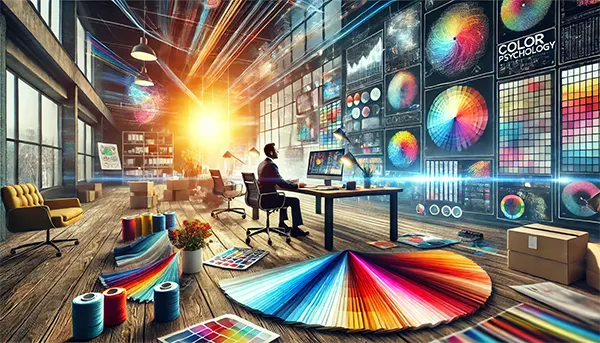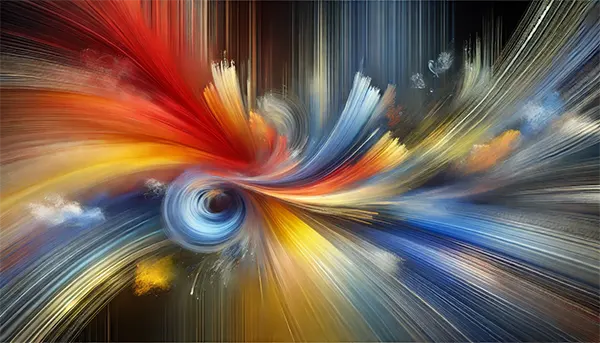
How Colors Influence Consumer Behavior in Marketing Campaign
Color psychology has become a crucial tool in modern marketing, influencing how brands connect with their audience. By understanding the emotional impact of different colors, marketers can tailor their campaigns to evoke specific feelings, behaviors, and actions from consumers. In this article, we’ll explore the importance of color psychology in marketing and provide insight into how you can use colors effectively to engage customers in 2025.
Understanding the Impact of Colors in Marketing
Colors are not just a visual element; they carry psychological weight that affects consumer behavior. For marketers, understanding the significance of color is crucial to shaping how potential customers perceive a brand. Different colors can trigger specific emotions and associations, such as trust, excitement, or calmness, all of which play a role in the decision-making process. For instance, blue often evokes a sense of trust and dependability, making it a popular choice for corporate and tech brands. On the other hand, red is frequently used to stimulate excitement or urgency, which is why it’s so common in clearance sales or fast food branding.
In 2025, businesses will need to pay even closer attention to the psychology behind their color choices. With an ever-growing number of brands competing for attention, using colors that connect emotionally with consumers is more important than ever. This involves understanding the deeper meanings behind colors and their cultural connotations. For example, green is often associated with health, nature, and sustainability, which makes it perfect for eco-conscious brands. Meanwhile, purple conveys creativity and luxury, appealing to those seeking premium products.
By strategically selecting colors that align with the values of a brand and the emotions they wish to evoke, marketers can significantly increase their chances of success. Color psychology is not just about choosing a palette that looks aesthetically pleasing—it’s about crafting an experience that resonates with the target audience. This deeper understanding of color’s influence will be key to building stronger connections with consumers in 2025 and beyond.
The Power of Emotional Associations with Colors
Each color in the spectrum evokes a unique emotional response, making it a powerful tool in marketing. For example, the color blue is often linked to calmness and reliability, which is why it’s commonly used by financial institutions and tech companies. Similarly, green is widely associated with freshness, health, and nature, making it a go-to for organic or eco-friendly brands. By tapping into these emotional associations, marketers can shape their messages in a way that resonates deeply with consumers on a subconscious level.
Colors can also have different meanings depending on the context or culture. Red, for example, can symbolize excitement or urgency in one market, but in another, it might be associated with danger or warning. Understanding the cultural and emotional significance of colors is vital for marketers who want to reach a global audience. For example, while white is associated with purity and peace in many Western cultures, it represents mourning and loss in some Asian cultures.
In addition to these cultural factors, marketers also use colors to signal specific brand values. For example, a brand that wants to convey trust and security might lean heavily on blue, while a brand aiming to evoke a sense of fun and playfulness might incorporate more vibrant hues like yellow or orange. By using color psychology thoughtfully, businesses can build a consistent and effective brand image that connects emotionally with their target audience.
Choosing the Right Colors for Your Brand in 2025
As we move into 2025, it’s clear that the importance of choosing the right color palette for your brand will only increase. Consumers are becoming more sophisticated and discerning, which means that every marketing touchpoint must reflect the values and personality of the brand. A well-chosen color scheme can help build instant recognition and foster brand loyalty.
The first step in selecting the right colors for your brand is to understand the emotions and values you want to convey. Do you want your customers to feel energized and excited? Consider bold colors like red or orange. Do you want them to feel calm and relaxed? Soft blues and greens may be a better choice. Once you have a clear sense of your brand’s personality, you can start to choose a color palette that aligns with these feelings and values.
Another critical factor to consider when choosing colors is the overall design of your brand materials. Colors should work harmoniously across all platforms, from your website to your logo and promotional materials. It’s important to create a cohesive look that makes it easy for consumers to recognize your brand instantly. In 2025, brands will need to integrate color psychology not just into their logos but throughout their entire customer experience, ensuring that every interaction feels seamless and aligned with the brand’s emotional goals.
Balancing Aesthetics with Functionality
In 2025, a successful marketing campaign doesn’t just focus on visual appeal; it also incorporates the psychological aspects of color to ensure that the colors chosen serve both aesthetic and functional purposes. A well-balanced color palette can create a more engaging user experience while reinforcing the message the brand wants to convey. For example, using muted tones for background colors can allow brighter, more attention-grabbing colors like red or yellow to stand out for calls to action.
Marketers should also consider the overall user journey when choosing colors. Colors used in buttons, links, or call-to-action elements should draw attention without overwhelming the user experience. It’s important to strike the right balance between using color to guide the user and maintaining a visually appealing layout that doesn’t appear too busy or cluttered. Subtle color contrasts and well-placed accents can help highlight key information while keeping the design clean and user-friendly.
Additionally, as the digital landscape continues to evolve, it’s important to test how colors appear on various devices and screens. Colors can look different on a smartphone screen compared to a desktop or printed material. Ensuring that your colors are visually effective across all platforms will be crucial for a seamless brand experience in 2025.

Future Trends in Color Psychology for Marketing
Looking ahead, the role of color psychology in marketing will continue to evolve. As technology advances and new tools for digital marketing emerge, businesses will have more opportunities to use colors in innovative ways. Augmented reality (AR) and virtual reality (VR) marketing are examples of platforms where color will play a crucial role in shaping consumer experiences. In these immersive environments, colors will need to be carefully chosen to evoke the desired emotional response and create a compelling, interactive experience.
In addition to technological advancements, social and cultural trends will also influence the use of colors in marketing. In 2025, consumers are becoming more socially conscious, and brands will need to reflect these values in their marketing campaigns. Earthy tones and sustainable colors like green and brown may become more popular as consumers gravitate toward eco-conscious brands. Similarly, the rise of mindfulness and wellness culture could increase the use of calming and peaceful colors like blue and lavender.
In the future, personalization will also play a significant role in color psychology. With the growing prevalence of AI and data analytics, brands will be able to tailor color choices to individual preferences and behaviors. For instance, AI could analyze a user’s browsing history to recommend products in colors that are most likely to appeal to their emotional state at that moment. As color psychology becomes more personalized and data-driven, brands will need to be more mindful of their customers’ evolving preferences and emotional responses.
Embracing the Future of Color in Marketing
To stay ahead of the competition, brands will need to embrace color psychology as a key component of their marketing strategies in 2025. By using colors thoughtfully, marketers can create stronger emotional connections with consumers and build more memorable brand experiences. However, it’s not just about choosing the right colors—it’s about continuously evolving with the changing preferences and expectations of your audience.
In 2025, businesses will also need to invest in more personalized and data-driven approaches to color psychology. By using advanced analytics and AI, brands can deliver more tailored, engaging, and impactful experiences for their customers. The future of color psychology in marketing is an exciting one, with endless possibilities for innovation and creativity. Marketers who understand the emotional power of color and adapt to emerging trends will be well-positioned for success in the years to come.
As we move into a new era of marketing, the emotional power of color will continue to shape how brands communicate with their audiences. Marketers who understand the intricate connections between color and emotion will be able to craft compelling messages that resonate with their customers, driving greater engagement, loyalty, and ultimately, sales.
